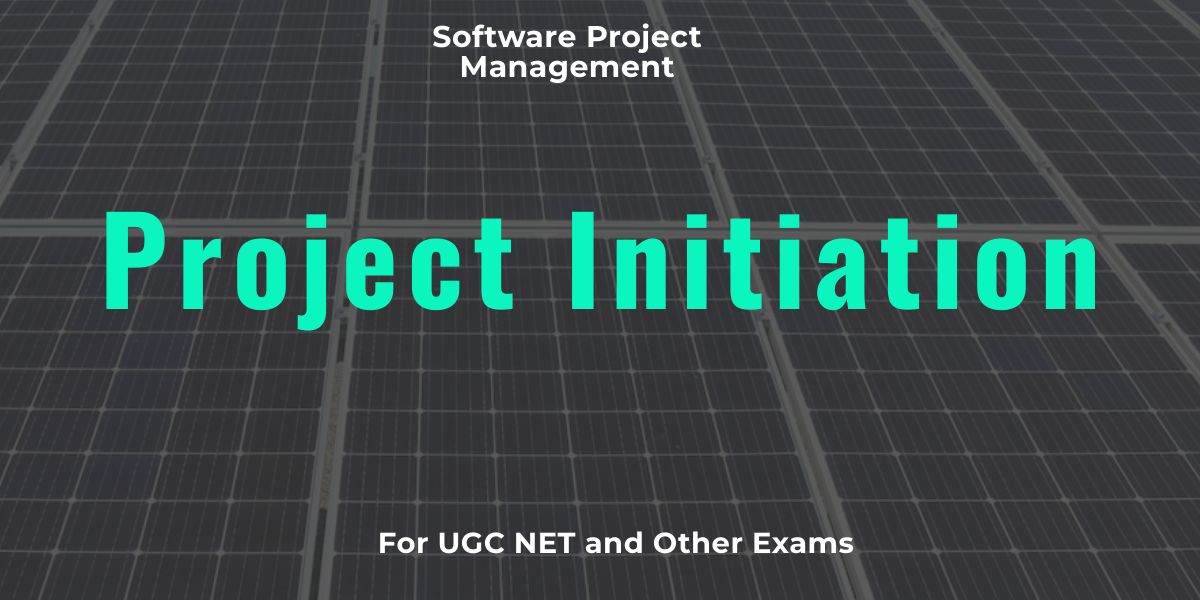
Project Initiation
What is Project Initiation?
Project initiation is the first phase of the project lifecycle, where the project is formally defined, approved, and authorized to begin. This phase involves identifying project goals, stakeholders, scope, and feasibility to ensure the project is worth pursuing.
🔹 Key Question: “Should this project be executed?”
🔹 Objective: Establish a strong foundation for project success.
Key Steps in Project Initiation
Project initiation involves several critical steps that set the foundation for the project.
1. Develop a Project Charter
A Project Charter is a formal document that authorizes the project and provides an overview.
📌 Key Elements of a Project Charter:
- Project Name → Defines the project title.
- Project Objectives → What the project aims to achieve.
- Project Scope → Defines the boundaries (what’s included and excluded).
- Stakeholders → Identifies key people involved.
- Budget & Timeline → High-level estimation of cost and duration.
- Project Risks → High-level risk assessment.
- Project Approval → Formal sign-off by sponsors or leadership.
📌 Example:
Project Name: Online Learning Platform Development
Objective: Build a user-friendly e-learning platform to host courses.
Scope: Develop a web-based platform, integrate video hosting, and create a payment system.
Budget: $100,000
Timeline: 6 months
Project Sponsor: CEO of XYZ Company
2. Identify Stakeholders
Stakeholders are individuals or groups who are affected by or influence the project.
📌 Key Stakeholder Groups:
✔ Project Sponsor → Provides funding and strategic direction.
✔ Project Manager → Oversees execution and manages risks.
✔ Development Team → Engineers, designers, and testers.
✔ Customers/Clients → End-users who will use the final product.
✔ Regulatory Bodies → Ensure compliance with laws and industry standards.
📌 Stakeholder Analysis Table Example:
| Stakeholder | Role | Influence Level | Interest |
|---|---|---|---|
| CEO | Project Sponsor | High | Approves funding |
| IT Manager | Technical Lead | Medium | System integration |
| Customers | End Users | High | User experience |
3. Define High-Level Scope & Objectives
Clearly define what the project will deliver and what is out of scope.
📌 Example (For an E-Commerce Website):
✅ In Scope: Website development, product catalog, payment integration.
❌ Out of Scope: Mobile app, AI chatbot, third-party logistics system.
4. Conduct Feasibility Study
A feasibility study determines whether the project is technically, financially, and operationally viable.
📌 Feasibility Areas:
✔ Technical Feasibility → Do we have the right technology & expertise?
✔ Financial Feasibility → Can we afford it? Will it be profitable?
✔ Operational Feasibility → Can the organization support the project?
✔ Legal Feasibility → Does the project comply with regulations?
📌 Example:
For an AI-powered chatbot project, the feasibility study may reveal:
- 🟢 The technology exists (✔ Technically feasible).
- 🟡 Requires $50,000 in AI licensing fees (⚠️ Financial risk).
- 🔴 May require regulatory approval (❌ Legal feasibility concern).
5. Identify Risks & Constraints
Understanding potential challenges before the project starts helps in risk management.
📌 Common Constraints:
✔ Budget Constraints → Limited funding may affect scope.
✔ Time Constraints → A fixed deadline may limit features.
✔ Resource Constraints → Limited team availability.
📌 Risk Analysis Example:
| Risk | Impact | Probability | Mitigation Strategy |
|---|---|---|---|
| Budget Overrun | High | Medium | Maintain a contingency budget. |
| Technology Failure | High | Low | Use cloud-based backups. |
| Scope Creep | High | High | Use a formal change request process. |
6. Secure Project Approval
Once all planning details are ready, the project sponsor or leadership team must approve the project before moving forward.
📌 Approval Process:
- 📑 Submit Project Charter → Formal document review.
- 🎯 Get Stakeholder Buy-in → Ensure all key players agree.
- ✅ Final Sign-off → Official green light to start the project.
Project Initiation Deliverables
By the end of the initiation phase, the following documents should be ready:
📌 Deliverables Checklist:
✅ Project Charter → Formal project authorization.
✅ Stakeholder Register → List of key stakeholders and roles.
✅ Feasibility Study Report → Evaluates project viability.
✅ Risk Register → Identifies potential risks and mitigation strategies.
✅ Approval Document → Confirms project funding and leadership support.
Common Challenges in Project Initiation
❌ Unclear Objectives → Leads to confusion and scope creep.
❌ Lack of Stakeholder Buy-in → Causes resistance later in the project.
❌ Poor Feasibility Analysis → Leads to unexpected issues.
❌ Ignoring Risks → Results in costly mistakes later.
✔ Solution: Use structured planning, clear documentation, and stakeholder engagement to ensure success.
Conclusion
Project Initiation is the foundation of a successful project. A well-planned initiation phase ensures:
✅ Clear goals and objectives
✅ Well-defined scope and deliverables
✅ Effective stakeholder engagement
✅ Identified risks and constraints
✅ Approved project charter




